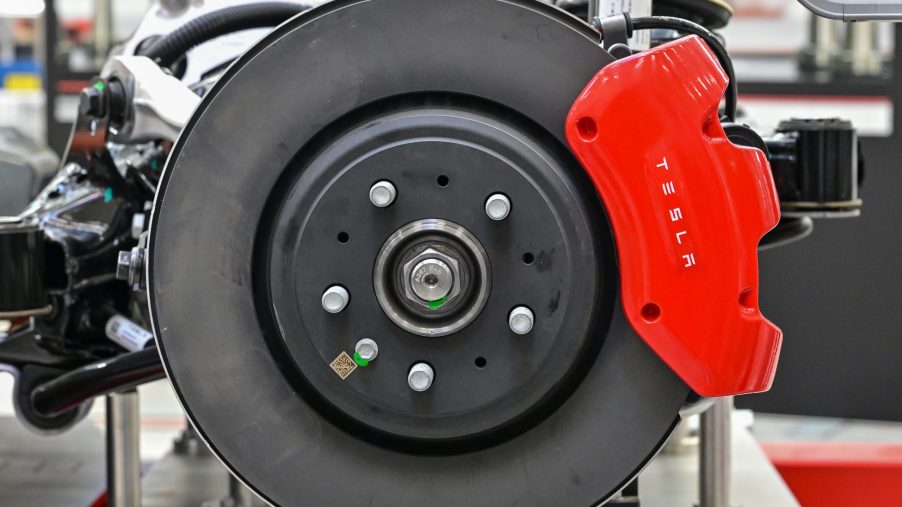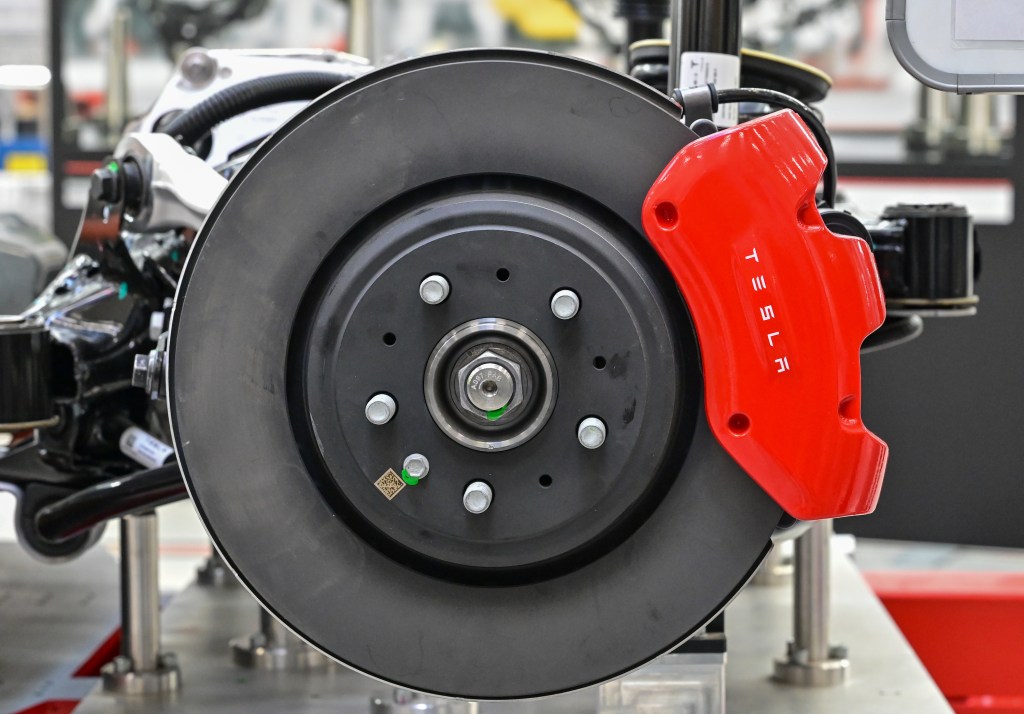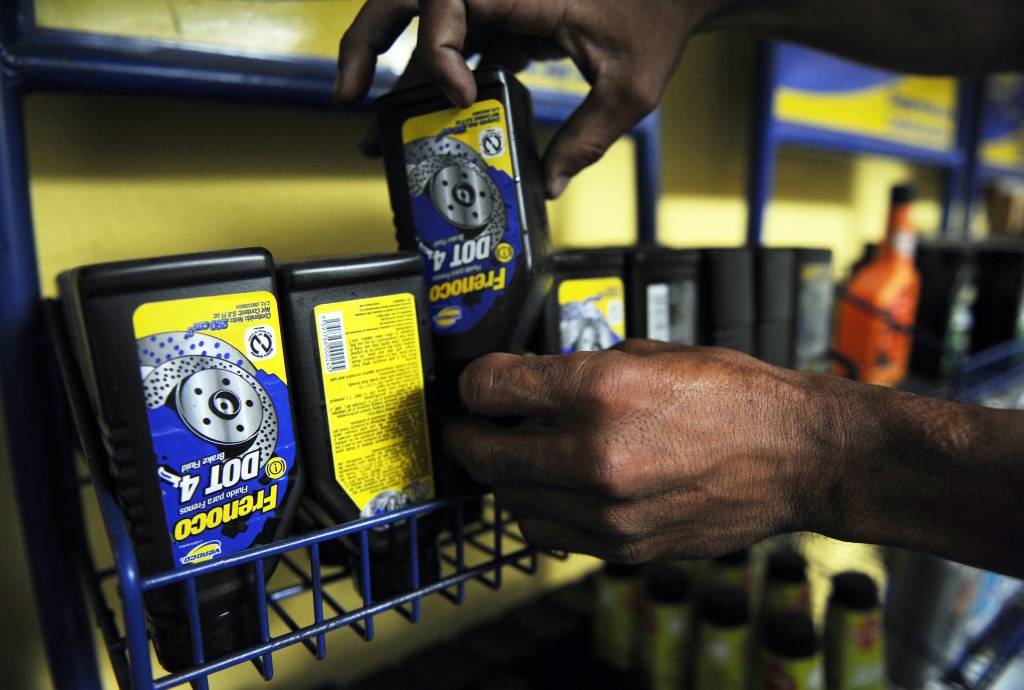
Disc Brakes Can Be Complicated: Here’s How to Maintain Them
In terms of car part importance, brakes are top of the list. Making a car move is all well and good, but eventually, you’ll want to stop. And if you don’t properly maintain your brakes, you might find yourself in a dangerous situation. But complicated disc brakes can seem overwhelming, so let’s break down the various different components, and how to properly maintain them.

The components of a disc brake, how they work, and how to maintain them
The three main parts of a disc brake are the brake pads, the brake rotors, and the calipers. To put it very simply, the calipers hold the pads in place and push those pads against the rotors in order to slow the car. That’s the SparkNotes version of how disc brakes work, so allow me to go into more detail.
Every brand builds its brake pads differently, but they have a coating of ceramic material that, when pressed against the spinning rotor, rubs off. Obviously, this wears the pads out overtime, shrinking how much pad you have. Typically, a pad starts with eight to 12 millimeters of material, and once it gets down to three millimeters, it’s time to replace them.
The easiest way to measure how much pad you have left is to let someone else do it. Drive your car to your local Firestone and have them do a brake inspection. It’s typically free and will let you know how many millimeters of pads are left.
How long a brake pad will last solely depends on how much you drive. You could go 1,000 miles without touching the brake if you’re driving down the highway. But in the city, you’re on the brake more than you’re on the gas. On average, they’ll last 45,000 miles according to Firestone, but the only way to know for sure is to frequently check them.
The rotors, meanwhile, are large metal discs connected to the axel that slow the car down. It’s very easy to check your rotors, and in some cases, you don’t even need to remove the wheels. After a long life, rotors will develop little marks, which is normal. Just run your fingernail across the metal and make sure it’s still relatively smooth, and you’ll be just fine. Brake rotors often last longer than pads, around 60,000. But again, it depends on your driving style.
The calipers should last the life of the car, and if one of them goes bad, you’ll notice one of a few things. If all of a sudden your brake pedal is rock hard, then you’re looking at a seized caliper. Drive the car around a bit, and do a little bit of braking, then feel the wheels. Whichever one is hotter is suffering from a seized caliper.
If your caliper cracks, chances are you’ll find fluid on the ground. Often overlooked, brake fluid is just as important to keep tabs on as the other components.
While the disc brakes are important, don’t forget about brake fluid

When you press on the brakes, you’re sending fluid to the calipers. That brake fluid pushes the pads against the rotors, thus stopping your car. However, the fluid exists in a vacuum, and letting air into the system is what causes your brake pedal to fail and hit the floor. However, a big part of automotive maintenance that gets missed is flushing the brake fluid.
While swapping out rotors and pads makes for an easy DIY project, flushing the brake system is more complicated. Unless you have the proper equipment, such as speed bleeders, it’s a two-person job. And messing it up will result in an incredibly expensive repair bill.
Regardless of whether you do it yourself or not, you’ll want to have your fluid flushed every three years. Any name brand fluid is fine, Pennzoil, Valvoline, or the manufacturer’s brand. But be sure it matches the rating recommended by your manufacturer. If your car isn’t a race car, chances are it uses DOT3 fluid. DOT4 is for high-performance brakes, and DOT5 is used in race cars and is made from a completely different chemical.
If brake fluid is a new concept to you, don’t worry, you haven’t totaled your car by not replacing it. However, if you know it hasn’t been touched in the past three years, or you have no service records to prove it has, you may want to have your brake hoses replaced as well.
If you’ve never changed the fluid, consider replacing the hoses as well
Brake hoses send the fluid from the main reservoir to the calipers and pads. And if old fluid is flowing through them, they can corrode and crack. This leads to a leak in the system, which lets air in and fluid out, causing the brakes to fail.
Unfortunately, this would essentially be a full brake job. Every drop of fluid would have to be drained before the new hoses could go on. And yes, the bill will be expensive. It’ll likely cost over $300 to replace the hoses and another $100 for the fluids. Pair that with new rotors and pads, which can add up to over $200 an axel, and you’re looking at a repair job over $1,000.
My advice? Learn to replace the pads and rotors yourself. That’s the bulk of the bill, and exchanging the pads is about as easy as putting together Legos. And rotors are even easier since they just slide on the axel. If you’re comfortable with it or have a buddy that knows a thing or two about cars, then you can have them help you out with getting rid of the old brake fluid. But if you’re looking at replacing hoses, then chances are you’ll want to consult the experts.


